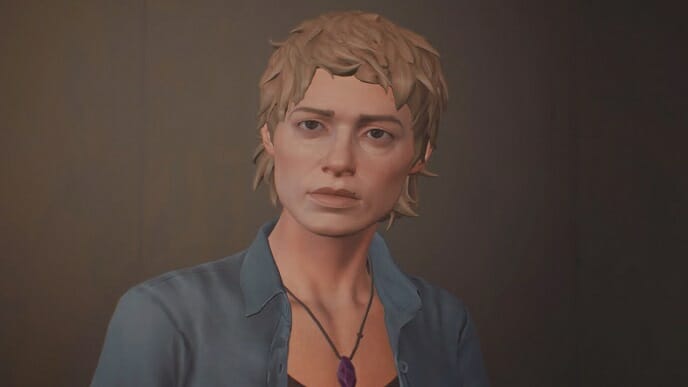Videogames love telling stories about fatherhood. They love it so much that you’ve probably familiar with the phrase “the dadification of games”—a term used to describe the flux of games with playable dads in the last generation resulting from men on videogame development teams becoming fathers. But, while we’ve certainly seen more fathers in videogames in the last generation, this isn’t an issue of circumstance.
God of War, The Witcher 3: Wild Hunt, The Last of Us, The Walking Dead, Dishonored, Heavy Rain, Bioshock Infinite, Yakuza, the majority of Final Fantasy games: some of the most well-known games of the last decade have centered on father figures. Although these are vastly different games, one of the few things they all have in common is that their narratives largely exclude or don’t prioritize mother figures. It’s a larger media-wide problem that stories about motherhood are much less common than stories about fatherhood; mothers and their stories are generally less valued. But Life is Strange 2 is one of the few games confident, ambitious and responsible enough to focus on motherhood in addition to fatherhood in its exploration of family and parenthood. It not only avoids one of the most common tropes in videogame stories, but also introduces one of the most complex and powerful mothers in them.
At the beginning, Life is Strange 2 seems to mirror so many other parenthood stories. Brothers Sean and Daniel Diaz live a relatively normal life with normal problems. Sean gets home from school with his best friend, bickers with his little brother, and then goes to the garage to talk to his dad, Esteban. In the garage, he sees an old box and wonders how long his father will keep “all this shit.” He thinks about how his dad should sell the green women’s bike that stands out from the other two blue bikes perched against the wall. When he goes up to the kitchen, he checks the whiteboard listing who gets which chores; only the names of Sean, Daniel, and Esteban are drawn on it. It’s quickly apparent that they must’ve had a mother who isn’t around anymore.
And then their lives change forever when Esteban is killed by a police officer while trying to mediate an altercation, forcing the boys on the run from the police.
Over the course of their time on the road, the brothers find out bits and pieces about their mother—including that she’s alive. Up until a certain point, her fate seemed ambiguous. Since this is a series in which the supernatural is blended with the reality, it’s easy to assume she’s absent because she, like Daniel, has powers. It was easy for me to immediately form the narrative that she was dead; that she had to run away because she couldn’t control her powers; that she was going to remain relegated to whispers and hearsay because once mothers are out of the picture—if they’re ever in the picture at all—they’re rarely ever brought back.
It’s a narrative that many were convinced of prior to her appearance in the fourth episode—all it takes is a quick Google search to see dozens of Reddit threads in which fans speculate about her having powers like Daniel or Max, the protagonist of the first season. And so it came as a surprise that the reason for Karen, Sean and Daniel’s mother, being absent is both the most mundane and radical reason possible: because she wanted to. Because she needed to leave for her own happiness.

Esteban and Karen rarely fought and deeply loved each other. Their marriage was relatively happy and, perhaps to some, seemingly perfect. There was no abuse, toxicity, infidelity, or external factor that played into Karen abandoning her family. She’s an only child of two parents who wanted her to grow up, get married, have children, and be an ideal wife and mother. But Karen wanted to be free from the expectations they imposed upon her. She wanted to do more than exist as a vessel for other people; she wanted to write poetry, be independent, discover what she wanted out of life, and live on her own terms.
Life is Strange series co-director Michel Koch tells Paste that, with Karen, the team wanted to discuss the double standards that exist for mothers in society. “Our society has really different standards for men and women. Of course, what she did is bad for Sean and Daniel. It hurt them, and we cannot deny that. But most of the time in society, when a father decides to leave his family, it’s almost okay. He can just go on with his life; everybody is okay with him. And when a woman does that, most of the time society sees her almost as a criminal … And so it was really important for us to try to use Karen to talk about that; about how society forces women to be mothers while they don’t force men to be anything.”
Family, and parenthood in particular, was one of the main themes of this season—and the fact is that parenthood looks like many different, and often messy, things. My mother is my favorite person in the world, the person whom I love most—and yet she is also the source of a trauma I will never be able to fully work through. But I understand her and why she made the choices she did, and she is a wonderful enough mother to understand that, in regards to the pain her mistakes have inflicted on me, this is all I can give her.
I appreciate that Life is Strange 2’s writing never excuses Karen’s actions and simply asks you to see the humanity behind them. Koch states, “I don’t want all of our players to forgive Karen, or to say that she was right to do that. But what I would love is that most of the players agree at the end of Episode Five that she had her reasons, and that it’s also important to understand why she did what she did. And maybe to not be too judgmental about it; maybe you can still say that it hurt people, that it was bad and that it created some harm. But… even if someone does something that hurts other people, you can still try to be empathetic and understand why they did something. And I think that if we did that in our society, we could have a world that would work better.”
Perhaps that’s why Karen quickly became my favorite character of Life is Strange 2. She is crucial to the story through both her absence and eventual presence. She is no saintly, romanticized, unreachable enigma, nor a villainized antagonist at the mercy of a patriarchal society’s unforgiving treatment of women who dare to make mistakes and be human. She isn’t killed off to motivate you as a player, she’s complex, and she represents much more than just motherhood.
As we enter a new decade for videogames, it’s incredibly disappointing that most stories struggle to do what Life is Strange 2 does with seemingly incredible ease. The sooner that the videogame industry learns to value mothers and their stories, the more interesting games we will play. And perhaps one day, we’ll even stop believing that only fatherhood stories can be universal. If men in leading positions on development teams can write about elves, dragons, aliens, and supernatural powers, then they can certainly write about mothers.
Natalie Flores is a freelance writer who loves to talk about games, K-pop and too many other things.
